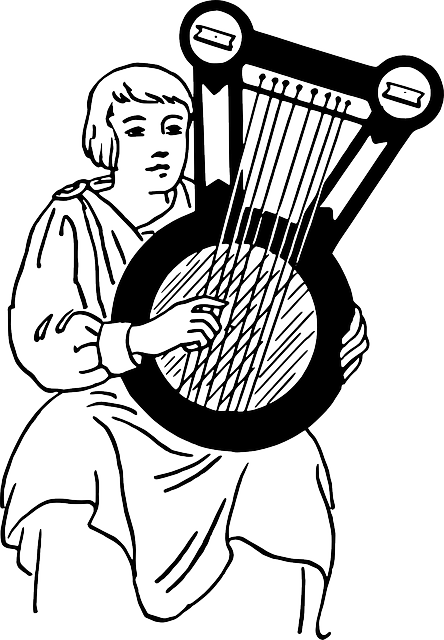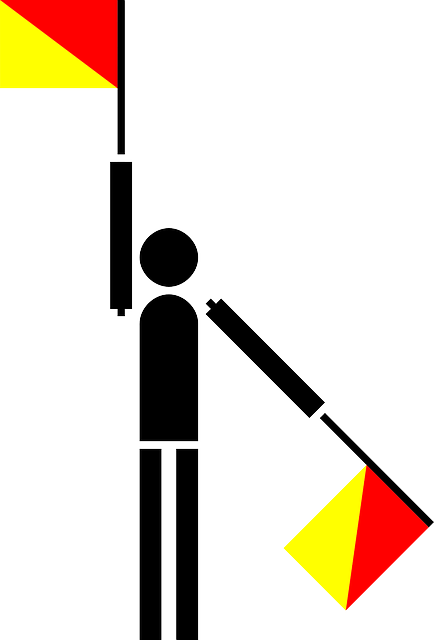التقويم البابلي
التقويم البابلي كان تقويم شمسياً قمرياً تتألف أعوامه من 12 شهر قمري، يبدأ جميع منهم حين يُشاهَد الهلال الجديد لأول مرة منخفضاً في الأفق الغربي عند الغروب، بالاضافة إلى intercalary month يضاف حسب الحاجة بقرار ملكي. التقويم مبني على تقويم سومري سابق (أور الثالثة) محفوظ في تقويم أومـّا من شولگي (ح. القرن 21 ق.م.).
الأشهر
The year begins in spring, and is divided into reš šatti "beginning", mišil šatti "middle", and kīt šatti "end of the year". The word for "month" was arḫu (status constructus araḫ). That the calendar originates in Babylonian, and not in later Assyrian times is shown by the fact that the chief deity of the Assyrians is assigned the surplus intercalary month. أثناء القرن السادس ق.م. السبي البابلي of the Hebrews, the Babylonian month names were adopted في التقويم العبري. التقويم الآشوري المستخدم في العراق والمشرق يستخدم، هوالآخر، الكثير من نفس الأسماء لأشهره، مثل إيـّار، تمّوز، آب، إلول، تشري، وآذار.
| Season | Month name | Presiding deities | Zodiac sign | Equivalents | |||
|---|---|---|---|---|---|---|---|
| Hebrew | Gregorian | Levantine | |||||
| Reš Šatti
𒊕𒈬 |
1 |
Araḫ Nisānu - 𒌚𒁈
'Month of the Sanctuary' |
Bel - 𒀭𒂗 | Agru (Aries) - 𒀯𒇽𒂠𒂷 |
Nisan
נִיסָן |
Mar/Apr | Naysān نَيْسَان |
| 2 |
Araḫ Āru - 𒌚𒄞
'Month of the Bull' |
Ea - 𒂗𒆠 | Gu (Taurus) - 𒀯𒄞 |
Iyar
אִיָּיר |
Apr/May | Ayyār أَيَّار | |
| 3 | Araḫ Simanu - 𒌚𒋞 | Sīn - 𒂗𒍪 | Maštaba (Gemini) - 𒀯𒈦𒋰𒁀 |
Sivan
סִיוָן |
May/Jun | Ḥazīrān حَزِيرَان | |
| 4 |
Araḫ Dumuzu - 𒌚𒋗
'Month of Tammuz' |
Tammuz - 𒀭𒌉𒍣 | Alluttu (Cancer) - 𒀯𒀠𒇻 |
Tammuz
תַּמּוּז |
Jun/Jul | Tammūz تَمُّوز | |
| Mišil Šatti
𒁇𒈬 |
5 | Araḫ Abu - 𒌚𒉈 | - | Nēšu (Leo) - 𒀯𒌨 |
Ab
אָב |
Jul/Aug | Āb آب |
| 6 | Araḫ Ulūlu - 𒌚𒆥 | Ishtar - 𒀭𒈹 | Sisinnu (Virgo) - 𒀯𒀳 |
Elul
אֱלוּל |
Aug/Sep | Aylūl أَيْلُول | |
| 7 |
Araḫ Tišritum - 𒌚𒇯
'Month of Beginning' |
Shamash - 𒀭𒌓 | Zibānītu (Libra) - 𒀯𒄑𒂟 |
Tishrei
תִּשְׁרֵי |
Sep/Oct | Tishrīn al-Awwal تِشْرِين الْأَوَّل | |
| 8 |
Araḫ Samnu - 𒌚𒀳
'Month of Laying Foundations' |
Marduk - 𒀭𒀫𒌓 | Zuqaqīpu (Scorpio) - 𒀯𒄈𒋰 |
Cheshvan
מַרְחֶשְׁוָן/חֶשְׁוָן |
Oct/Nov | Tishrīn ath-Thānī تِشْرِين الثَّانِي | |
| Qīt Šatti
𒌀𒈬 |
9 | Araḫ Kislimu - 𒌚𒃶 | Nergal - 𒀭𒄊𒀕𒃲 | Pabilsag (Sagittarius) - 𒀯𒉺𒉋𒊕 |
Kislev
כִּסְלֵו |
Nov/Dec | Kānūn al-Awwal كَانُون الْأَوَّل |
| 10 |
Araḫ Ṭebētum - 𒌚𒀊
'Month of the Forthcoming of Water' |
Papsukkal - 𒀭𒊩𒆠𒋚 | Suḫurmāšu (Capricorn) - 𒀯𒋦𒈧𒄩 |
Tebeth
טֵבֵת |
Dec/Jan | Kānūn ath-Thānī كَانُون الثَّانِي | |
| 11 | Araḫ Šabaṭu - 𒌚𒊭𒉺𒌅 | Adad - 𒀭𒅎 | Gula (Aquarius) - 𒀯𒄖𒆷 |
Shebat
שְׁבָט |
Jan/Feb | Shubāṭ شُبَاط | |
| 12 |
Araḫ Addaru / Adār - 𒌚𒊺
'Month of Adar' |
Erra - 𒀭𒅕𒊏 | Zibbātu (Pisces) - 𒀯𒆲𒎌 |
Adar
אֲדָר |
Feb/Mar | Ādhār آذَار | |
| Intercalary | 13 |
Araḫ Makaruša Addari[citation needed] Araḫ Addaru Arku - 𒌚𒊺𒂕 |
Assur - 𒀭𒀸𒋩 | In year 17 of the 19-year cycle, the intercalary month was named Araḫ Ulūlu - 𒌚𒆥 | Adar II | ||
Until the 5th century BC the calendar was fully observational, but beginning about 499 BC the months began to be regulated by a lunisolar cycle of 19 years equaling 235 months. Although usually called the Metonic cycle after Meton of Athens (432 BC), Meton probably learned of the cycle from the Babylonians. After no more than three isolated exceptions, by 380 BC the months of the calendar were regulated by the cycle without exception. In the cycle of 19 years, the month Adaru 2 was intercalated, except in the year that was number 17 in the cycle, when the month Ululu 2 was inserted. During this period, the first day of each month (beginning at sunset) continued to be the day when a new crescent moon was first sighted—the calendar never used a specified number of days in any month.
الأيام
Counting from the new moon, the Babylonians celebrated every seventh day as a "holy-day", also called an "evil-day" (meaning "unsuitable" for prohibited activities) .[] On these days officials were prohibited from various activities and common men were forbidden to "make a wish",[] and at least the 28th was known as a "rest-day" .[] On each of them, offerings were made to a different god and goddess, apparently at nightfall to avoid the prohibitions: Merodach and Ishtar on the 7th, Ninlil and Nergal on the 14th, Sin and Shamash on the 21st, and Enki and Mah on the 28th. Tablets from the sixth-century BC reigns of Cyrus the Great and Cambyses indicate these dates were sometimes approximate. The lunation of 29 or 30 days basically contained three seven-day weeks, and a final week of eight or nine days inclusive, breaking the continuous seven-day cycle.
Among other theories of Shabbat origin, the Universal Jewish Encyclopedia advanced a theory of Assyriologists like Friedrich Delitzsch that Shabbat originally arose from the lunar cycle, containing four weeks ending in Sabbath, plus one or two additional unreckoned days per month. The difficulties of this theory include reconciling the differences between an unbroken week and a lunar week, and explaining the absence of texts naming the lunar week as Shabbat in any language.
شبتو Šabaṭu هوالإسم الذي يطلقه البابليون على الأيام الحرم التي يحرم فيها أي شيء عدا الصوم والعبادة وكذلك إستعمله اليهود لتسمية أعيادهم وأيام السبت المقدسة.
انظر أيضاً
- التقويم الآشوري
- التنجيم البابلي
- فهم الفلك البابلي
- التقويم العبري
- التقويم الهجري
- Persian calendar
- Islamic calendar
- Solar Hijri calendar
- Pre-Islamic Arabian calendar
- Arabic names of Gregorian months
- MUL.APIN
- Egyptian, Coptic, & Ethiopian calendars
- التقويم الزرادشتي& Armenian calendars
الهامش
-
^ خطأ استشهاد: وسم
<ref>غير سليم؛ لا نص تم توفيره للمراجع المسماةere - ^ Landau, Judah Leo. . Johannesburg, South Africa: Ivri Publishing Society, Ltd. pp. 2, 12. Retrieved 2009-03-26.
- ^ Joseph, Max (1943). "Holidays". In Landman, Isaac (ed.). The Universal Jewish Encyclopedia: An authoritative and popular presentation of Jews and Judaism since the earliest times. 5. Cohen, Simon, compiler. The Universal Jewish Encyclopedia, Inc. p. 410.
- ^ Joseph, Max (1943). "Sabbath". In Landman, Isaac (ed.). The Universal Jewish Encyclopedia: An authoritative and popular presentation of Jews and Judaism since the earliest times. 9. Cohen, Simon, compiler. The Universal Jewish Encyclopedia, Inc. p. 295.
- ^ Cohen, Simon (1943). "Week". In Landman, Isaac (ed.). The Universal Jewish Encyclopedia: An authoritative and popular presentation of Jews and Judaism since the earliest times. 10. Cohen, Simon, compiler. The Universal Jewish Encyclopedia, Inc. p. 482.
- ^ Sampey, John Richard (1915). "Sabbath: Critical Theories". In Orr, James (ed.). . Howard-Severance Company. p. 2630.
- Parker, Richard A. and Waldo H. Dubberstein. Babylonian Chronology 626 BC.–AD. 75. Providence, RI: Brown University Press, 1956.
- Structure of the Babylonian calendar
- W. Muss-Arnolt, The Names of the Assyro-Babylonian Months and Their Regents, Journal of Biblical Literature (1892).
- Sacha Stern, "The Babylonian Calendar at Elephantine" in Zeitschrift für Papyrologie und Epigraphik 130 (2000) 159–171 (PDF document, 94KB)
- Fales, Frederick Mario, “A List of Umma Month Names”, Revue d’assyriologie et d’archéologie orientale, 76 (1982), 70–71.
- Gomi, Tohru, “On the Position of the Month iti-ezem-dAmar-dSin in the Neo-Sumerian Umma Calendar”, Zeitschrift für Assyriologie und Vorderasiatische Archäologie, 75 (1985), 4–6.
- Pomponio, Francesco, “The Reichskalender of Ur III in the Umma Texts”, Zeitschrift für Assyriologie und Vorderasiastische Archäologie, 79 (1989), 10–13.
- Verderame, Lorenzo, “Le calendrier et le compte du temps dans la pensée mythique suméro-akkadienne”, De Kêmi à Birit Nâri, Revue Internationale de l'Orient Ancien, ثلاثة (2008), 121–134.
- Steele, John M., ed., "Calendars and Years: Astronomy and Time in the Ancient Near East", Oxford: Oxbow, 2007.
وصلات خارجية
- The Babylonian Ritual Calendar
- The Mul.Apin Tablets
- The Babylonian Calendar (with a date converter based on Parker & Dubberstein (1971))
















